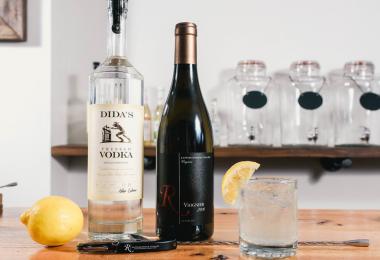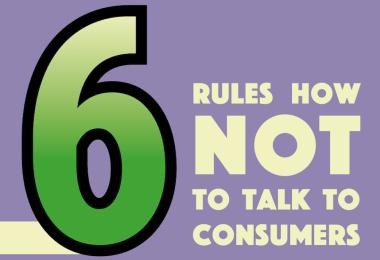In the spring of 2018, Winesellers faced a big decision.
Traditionally, about 90% of the family-run business has been imported wines, but in recent years it has also become a négoçiant-style producer. Now the Chicago-based firm, along with its business partner, Master Wines, felt the need to expand its American portfolio. “Getting involved with wines from Oregon and Washington is something we’d been thinking about for many years, so it’s always kind of been on the radar,” says Jordan Sager, who is co-president of Winesellers along with his brother Adam. While the partnership had not done a formal portfolio analysis, Sager says they had been monitoring market data – and that now urged action.
Why now?
In early April 2018, Wines & Vines reported annual sales growth of Oregon and Washington wines were outpacing those of California, with room to grow in the attractive $11-19 off-premises retail market. Moreover, Foley Family Wines, a competitor, had recently purchased King Estate in Oregon, a 160,000-case producer.
“We were having dinner one night – I think it was March or April of last year – while we were visiting our wholesaler in Seattle,” says Mel Master, head of Master Wines. “I think it was just being together in the Pacific Northwest that cemented the idea. We started discussing how we felt that time was slipping away in the Northwest if we didn’t do it now. We already had a brand in California, and nowhere else in America made sense – not California, not New York.”
The Sager and Master families have been friends as well as on-and-off business partners since the 1970s, working in parallel wine sales and marketing businesses that seemed to intersect almost as much as they were separate. As their business relationships intertwined through the years, Yale Sager and Mel Master watched their children grow up to take over more of the combined businesses. In the early 2000s, the two families formed a new partnership, and Master took a brand he had founded in the South of France – Tortoise Creek – and, with the Sagers, converted it into a California brand using sourced grapes. “The name Tortoise Creek seemed more California than French anyway,” Master laughs.
“Adam had found a source of grapes in Washington and one in Oregon, and we decided that evening that now was the time to move on a Northwest brand,” Master continues. “We have created and developed brands from all over the world, including Tortoise Creek, Tiamo from Italy, Le Charmel, Mont Gravet and Exem, all from France.” Now, Winesellers needed to establish a Northwest wine brand. Given the need to move on the grapes sourced, it also meant they had about a year to convert raw wine into branded product. For his part, Jordan Sager felt confident the partnership already had lots of launch experience to move quickly and mostly on its own.
First, Sager outlined a checklist to be considered – how much wine to make now, what to plan for in the future, the cost of goods, a standard retail price, wine quality, the wines’ AVAs or wine appellations, vintage timing and marketing potential. “While we wanted it to be an attractive price point, we didn’t want for it to be low-end where it’s difficult to get good quality,” Master says.
With previous brands, the partnership had retained the same small branding firm for name development, but this time it had a special reason to do the naming in-house.
“One of the key ingredients to consider when creating a new brand is the story behind it,” Master says. “We feel we have a pretty special one: two people meet 40 years ago and form a friendship and a partnership. Today, we both have sons that are in the same business with us. It’s a true kinship and we wanted to make that part of the story.” So, like a family, they sat together and tossed around baby names, arguing about which was best. “When you get four or five people who are all entrepreneurial, getting everyone to agree on a name is challenging,” says Master. “We went back and forth, and when we found one we liked, we would Google it to see if anyone else had it. I think Adam came up with ‘Kin’ to note it was a family business,” he says, “and we added ‘Cascadia’ for the Cascade Mountains, which covered both Oregon and Washington.” They Googled ‘Kin & Cascadia’, and it easily passed the test – the only market testing performed.
The group had already determined that the two introductory wines would play to the regions’ strengths. The Washington wine, from the Wahluke Slope AVA, would be Cabernet Sauvignon. The Oregon wine would be a Willamette Valley Pinot Noir. Kin & Cascadia could later be extended to other varieties and blends, as needed. As the people supplying the grapes had their own wineries, they would oversee production but, as they also had their own brands, the source would not be made public. The next big decisions involved the label and the formulation of blends, as grapes would be coming from more than one vineyard block.
By now, most discussions were via e-mail or phone, with the Sagers in Chicago, Master in his New Hampshire office and the sources in the Northwest. In a digital age, no one wanted to spend time and money on old-fashioned, face-to-face meetings around a conference room table with PowerPoint presentations.
The creative approach
For the past five years, Winesellers has retained Gareth Debenham, owner of GoBig Branding, to handle its label development and other marketing collateral. Located in Weston just outside of Boston, GoBig is a small agency that nevertheless services some large food and wine clients such as Dunkin’ Donuts and Baskin-Robbins. Debenham himself has become a specialist at wine labels, having developed scores of them over the past 18 years, including those for the partners.
“It was September 27, and I was working in my office when an e-mail popped up from Jordan,” he says. “Jordan said he wanted me to help launch a new brand, so we had an e-mail conversation for an hour or so about timing and costs,” he says. “They already had a name for the brand – in the past I’ve been asked to do that as well – so I was given a month to do the rest. It wasn’t like it was, ‘Quick, quick, urgent, urgent!’.”
As soon as the conversation was finished, Debenham drove a few miles west along I-95 to nearby Natick, where a Total Wine store, America’s largest wine chain, is located. “I love walking up and down the aisles of the store, looking at all the wines and their labels,” the British-born Debenham says. “I’ve been working long enough with Winesellers to know their aesthetics. First, we wanted a lifestyle label that would say outdoors and adventure. Second, it would have to indicate a sense of place. Finally, we wanted a young, modern typeface with clean lines. I paid special attention to the store’s Cabernet and Pinot sections and found nothing that would be competitive.”
Over the next few days Debenham developed different looks – with and without people, close-ups and distant shots – but all along the same concept. After he had developed about a dozen possibilities, he e-mailed them to Chicago and New Hampshire and waited. “I always laugh that I hope Jordan has a good printer, because when we’re working on a new brand, he likes to cut out the labels and wrap them around a bottle to see how they look,” Debenham says. Sager continues: “Sometimes, we mix and match fonts or images from one look and use it on a different one. This process is usually completed after four or five rounds” of iterations.
A month after the first e-mail, Debenham had the final designs – a moody photo of mountains and evergreens in the background and a lake in the foreground. Meanwhile, the two wines were being formulated. “The wineries would send blended samples to Chicago for review, then they would be forwarded to me,” Master says. The Winesellers team informally tasted the wines with key clients before the final blends were chosen.
On January 1st 2019, Adam and Jordan Sager officially took over from their father as co-presidents. And it was announced that a large American distributor, Winebow, which already represented all of Winesellers’ business in the lucrative California and East Coast markets, would now be doing the same for Oregon and Washington. Sager says the pending Kin & Cascadia launch had nothing to do with that decision.
Then came a roadblock. At the end of 2018, the US government had shut down over budget disagreements between the Trump Administration and the House of Representatives. “It was a big concern for us,” Master says, “as our Kin & Cascadia labels were still at the BATF [a government agency] for approval, and nothing could happen during the shutdown.” Finally, a political agreement was reached on January 25th, and the labels were approved.
“We had reviews in January and February with our national wholesalers, and we sampled them on the new products,” says Todd Nelson, the marketing director. “Fortunately, they liked the wines, and they liked the prices.” The Pinot Noir would have an SRP of $16 and the Cabernet would be at $14, well under $20. In mid-February, announcements were made to the trade media. “You can communicate things to distributors,” Nelson says, “but they don’t get excited until they see it in the media.”
In late February, Sager flew to the Northwest to see the bottles coming off the line. The first orders against the 6,000 cases produced were sold to Texas retailers in March, about a year after the Seattle dinner, and the roll-out to other states took place during the spring.
Will the decisions that Winesellers made pay off? In the end, all a brand owner can do is spot the opportunity, source the best material and ensure good distribution. After that, it’s up to the market.








